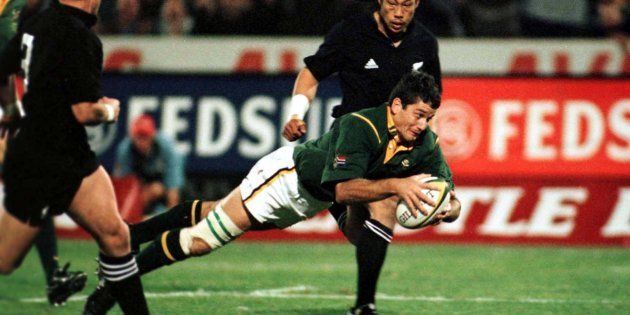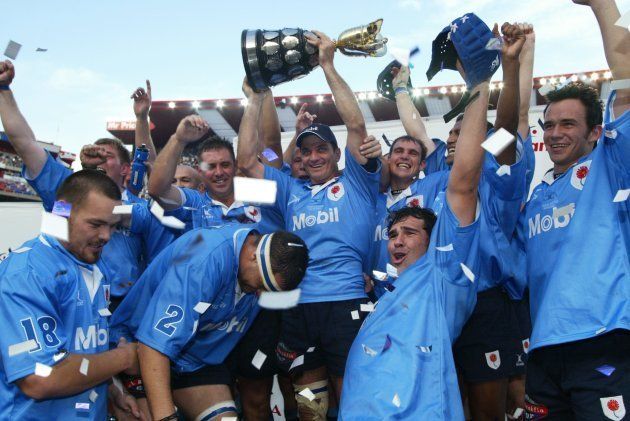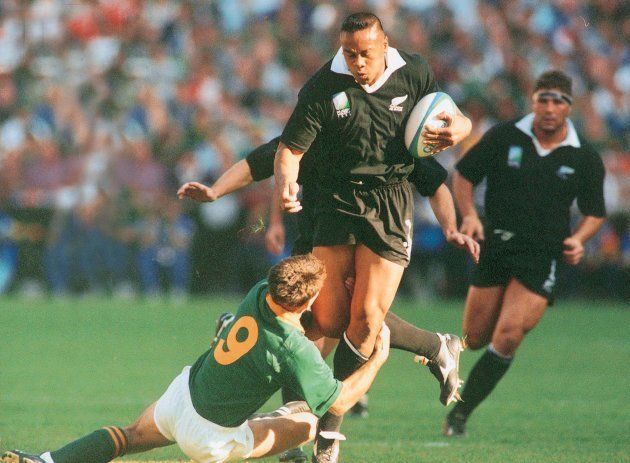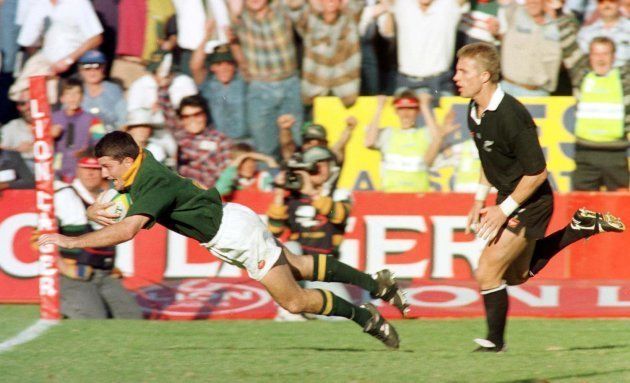
† Joost Heystek van der Westhuizen, February 20, 1971 to February 6, 2017
"Och, and again it's that man Vun Durr West-hausen, just absolutely ... mesmerical ... down the far touchline!" hummed Bill McLaren, the late, great Scottish BBC commentator with his baritone-and-Border-Country voice in November 1994.
The Springboks were in a shambles, seven months out from the 1995 Rugby World Cup, and Kitch Christie had famously taken on the assignment as Boks coach as an "ambulance job", trying to restore some semblance of order before the world came to Madiba's country.

Van der Westhuizen –- wiry, tall and strong –- announced himself on the world stage that day. Scoring two blistering tries against the Scots, one from the base of the scrum, galloping away from the cross defence, he set the tone for what was to become a stellar career in the game they play in heaven. The Boks creamed the Scots 34-10 and won the Rugby World Cup in June 1995.
His death on Monday, at the age of 45 valiantly battling motor neuron disease (MND), robs South Africans of one of our true sporting heroes. Van der Westhuizen was a crucial part of all our best teams since readmission to international rugby in 1992, and a fixture in the team for almost a decade, something unheard of in the modern game.
He was the scrumhalf that defied captain Francois Pienaar's orders and gave the ball to Joel Stransky to drop the winning kick in the World Cup final. He was also in the middle of the Pieter Rossouw try that gave the Boks their first win against New Zealand in the Land of the Long White Cloud in 1998 and heroically led the Boks in 1999 World Cup, shepherding fly half Jannie de Beer with his five dropped goals against England.
Van der Westhuizen wasn't a typical number nine. Whereas scrumhalves are usually expected to be a link between the forwards and the backs, Van der Westhuizen never wanted to conform. When he appeared on the scene, his fly half at then-Northern Transvaal was Naas Botha, the iconic flyhalf who preferred to let his boot do the talking.
The upstart number nine decided there was no reason why play could not be directed from behind the scrum, and he started terrorising defences around the fringes of the scum and rucks: darting, sniping and slicing through the opposition. His size was a boon, and commentators and opposition coaches often spoke about Van der Westhuizen being a fourth loose forward, keeping much larger men busy while creating opportunities for others outside of him.
If his tries against Scotland was a way of having people sit up and take notice, it was his performance against Sean Fitzpatrick's fearsome New Zealanders in 1995 that established him as one of the game's superstars.
Van der Westhuizen's tackle on the monstrous Jonah Lomu, the Tongan teenager that just demolished all-comers in the pool stages of the World Cup was a moment for the ages. Lomu –- all 120kg's of him -– received the ball from fly half Andrew Mehrtens, running in the opposite direction.
It was early in the game, and the All Blacks tried desperately to bring their matchwinner into play. Lomu cut through the first tackle, and the field opened up -– until Van der Westhuizen came up on cross-defence.
The scrumhalf –- big for his position, but nowhere near Lomu's gargantuan size, steadied himself and launched his green-and-gold jersey into Lomu's midriff. Ellis Park, with Madiba in the stands, erupted as the New Zealand talisman was felled. It gave the Boks enormous belief and from that moment, there was to be only one winner.

Van der Westhuizen's career wasn't only the shimmering highs of trophies and winners' medals. He had to take over the Springbok captaincy for the World Cup in 1999 when Gary Teichmann was dropped by coach Nick Mallett. And although the team made the semi-final, it wasn't a happy squad and he was replaced as captain by André Vos afterwards.
The last three years of his Test career weren't happy ones either. A succession of coaches, culminating in the calamity of Kamp Staaldraad and the disastrous 2003 World Cup, meant Van der Westhuizen never again performed as he did in settled teams, captained by respected players and coached by sharp minds.
He won the Currie Cup with the Blue Bulls twice, in 1998 and 2002, both years during which the Ligbloues were the underdogs.
His personal life was chequered. He was a darling of the media and regularly appeared in the mass circulation magazine Huisgenoot with his gleaming torso and smoky blue eyes, and he was not averse to flaunting his Springbok tattoo under his jockstrap.

Van der Westhuizen's first marriage ended in divorce amid rumours of acrimony, but it was the demise of his second marriage to Afrikaans singer Amor Vitonne, after revelations of drugs and affairs in 2009, that sent him spiralling into a rough and tumble life of fast living.
The couple reconciled after he was diagnosed with MNS in 2011, although they never resumed their marital relationship. He became an icon in the fight against MNS, travelling overseas in search of research towards a cure and starting a foundation to assist other sufferers of the disease.
Van der Westhuizen was a special talent. He redefined the role of the modern scrumhalf by doing what rugby is all about: running with the ball, evading tackles and scoring tries. He was a talent that fans paid money to go and see on Saturday afternoons and a rugby player who's Sports Illustrated poster adorned many a teenager's wall.
And he was a proud Springbok, one of the hardest men to wear the famous green and gold jersey and a player who earned universal respect amongst his peers. He never quit and he never gave up -- just like the day in Durban in 1998, with the Boks down and out against the All Blacks. It was Van der Westhuizen who breached the Black defence to score underneath the posts and engineer a stunning comeback.
He always spoke with pride and passion about what it meant to him to wear his country's No. 9 jersey -- and he backed it up with blood and sweat on his brow.

Searching YouTube for Van der Westhuizen's greatest tries is a mammoth task -– there are so many wonderful moments of his rangy body ducking underneath an attempted tackle, corkscrewing through the defence with someone's hands groping at his collar and his legs and arms flailing, before diving over in the corner.
But YouTube is also filled with interviews with Van der Westhuizen, ravaged by MNS, in different stages of deterioration. There's a clip where he drives around Carte Blanche's Derek Watts, explaining how difficult it is. There's also a clip where he attends a Bok function in a wheelchair wearing a neck brace, and then there's a clip where his on-field arch enemy Lomu visits him, when Van der Westhuizen can no longer talk.
Van der Westhuizen will be remembered as a great rugby player. But perhaps he'll rather be remembered as the guy who held out for six years against a disease for which there is no known cure.
Maybe that's what Bill McLaren will ask him about when they meet again. And not the rugby.
